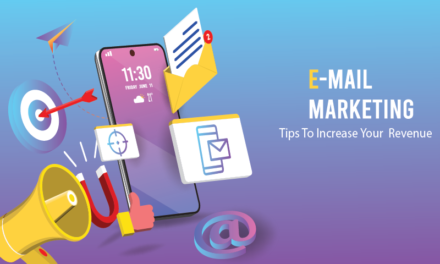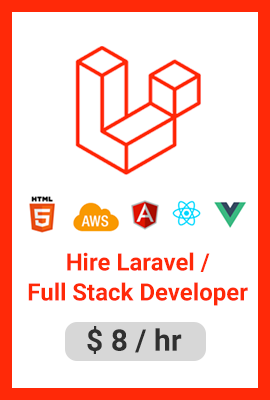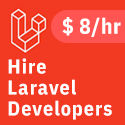Mobile apps have become even more popular in recent years due to a trending global epidemic and shifting beliefs over how often and when people interact. Sounds like the app market is on the up and up. There are over 2.22 million apps on the Apple App Store and 3.48 million apps available on Google Play.
The need for new apps won’t be going away anytime soon. There are a number of things that could contribute to it such as sales of 5G devices, post-pandemic device behaviour, and shopping convenience. According to new research from COVID, there’s been a big shift towards mobile. B2B and B2C customers are demanding mobile-first interactions and businesses are taking notice. This has led many companies to think about developing their own app.
This guide will cover the basics of mobile app development and design in 2023, with the goal of informing your decision-making before you start building a mobile app.
What is Mobile App Architecture?
A mobile app architecture is a set of rules, techniques, processes and patterns that developers can use to make your app. They’ll help you meet both business requirements and industry standards.
Mobile App Architecture vs Mobile Tech Stack
It’s very common for people to talk about app architecture when they actually mean the mobile tech stack. A mobile app’s mobile technology stack is the set of services and frameworks applied on the front end and back end to create a fully functional product. It includes user interface elements, networking capabilities, data handling libraries, as well as web or offline storage. It is less focused on the requirements coming from its business or customers (e.g., what they want it.
The mobile app architecture consists of a number of features and qualities, including what data is collected, how moves around, and with which tech stack it is compacted.
What makes a good app architecture for mobile apps?
There are a lot of new apps being developed nowadays, but many of them don’t include any architecture. This typically results in an app that’s not very stable, is difficult to maintain and needs a lot of work done to it.
These apps are more costly and time-consuming to develop. They’re also challenging to maintain if your staff changes, or if you want to build on it or scale it. Testing is harder as well, and they’re more prone to errors.
A good mobile application architecture will enforce software development principles like KISS, DRY and SOLID at the appropriate stages of development so that you can develop your app more quickly. The app has a clear structure and design with a ‘clear path’ for data flow. It also supports scaling or future expansion of the app.
A good app architecture is important for developers. It can keep an app’s layout flexible, increase testing efficiency and make future maintenance easier. A strong mobile app architecture will save you both time and money in the long run.
Good architecture is not platform specific. It will work for native and cross-platform situations, allowing developers to take a unified approach. Think of the skeleton that is giving structure and shape to your app. This part needs to be carefully planned, but it should not take away too much attention from the other important parts.
How many layers are there in mobile app architecture?
The most common way to divide up a mobile app’s architecture is by having three layers: presentation, development and data.
1. Presentation Layer
When designing the presentation layer, developers tend to focus on what the user will see and feel when using the app. They usually need to take into account things like design, layout, colours, as well as copywriting. In other words, the ‘surface’ of your app is made up of the UI and UX.
- UI is all about the visuals a user sees when they interact with the system. You’ve got questions like colours, fonts, placement, oh and of course the design!
- UX is a term that often gets used in app development. It refers to how customers interact with the app, and it relies on a clear understanding of what your user wants or needs..
When you’re designing the presentation layer of your app, it’s important to pick a platform and device type so that the layout is consistent with the overall design standard.
Business Layer
The business layer is the part of your company that deals with all the logic and regulations around data, operations, and workflow. It’s responsible for:
- Security
- Data caching
- Logging
- Data validation
- Exception management
You can choose whether to have your app’s business layer on the server or on the mobile device. It depends on what your app does and how much data processing it needs to do.
3. Data Layer
The data layer is the topmost layer and includes all parts of the OSI model that enable transactions to be processed. Roughly, you can think of it as two distinct cases:
- Here you’ll find all the tools, SDKs and APIs you need to work with data and market your cloud-based, mobile, or Big Data solutions.
- Network – network communication, routing, error reporting
One important thing to think about when designing the data layer is that you’ll need to figure out how it will be validated and maintained.
Android Mobile Application Architecture
Custom-built Android apps are one example of native apps – software designed to work natively on a certain operating system. Android apps are made with the intent of being used by devices from a range of different manufacturers, including Google. There isn’t an official Android architecture, but the most common one for mobile apps is Clean Architecture.
“Clean” is a programming language that is based on layers, a methodical hierarchy of organization we use in the architecture and engineering industries. They believe that this 3-layer structure (shown below) mimics the design pattern for our modern buildings. When you have a clean architecture, your business layer shouldn’t lean on any other layers for data. It should instead use the interfaces that these other layers provide. This is often difficult to understand but does make it easy to add features and scale applications over time.
iOS Mobile Application Architecture
Native iOS apps are made with Objective-C and Swift, with Apple providing clear best practices for app architecture. The MVC Model (Model-View-Controller) is one of the options available for iOS, and it has three parts:
Keeping your data safe and secure is really important. We offer a bunch of tools to help you stay on top of things, so you don’t have to worry about it.
The user interface is a layer that provides the app users with a way to interact with the app.
AI Controller-A level. This is the level that speaks to the software abstraction, translating through the protocol.
The MVC programming model can be used for various types of software, such as mobile apps. But the real advantage is how fast it allows you to develop!
Hybrid Mobile Application Architecture
Hybrid mobile apps offer a great solution as they let you use native building blocks while also relying on web services. One thing to note is that the platform-neutral scripting languages used in hybrid apps (HTML, CSS, JavaScript) are complemented by plugins such as Apache Cordova or Ionic Capacitor; this allows them to adapt quickly to any changes in the app environment.
A hybrid app is easy to create across a variety of platforms and very easy to update — but they may not be appropriate for more complex, interactive, or feature-rich applications.
Cross-Platform Application Architecture
Cross-platform development is kind of like a mix between mobile and desktop. It takes the common codebase from one platform and adds platform-specific changes for different platforms into a native shell for that OS type. Cross-platform applications consist of frameworks and use frameworks rather than web languages. For example, React Native Vs Xamarin. Cross-platform applications offer a better user interface & experience similar to native apps, which might be the reason why they are becoming more popular.
When building for mobile, it’s important to think about a few things. Here are some of the main factors to consider:
1. Device Type
When you’re designing a mobile app, first you need to figure out if it’s an iOS or Android app. Once that’s decided, narrow down which model of smartphone the app will be optimized for.
One of our goals is to provide the same great experience on any device (tablet or mobile, phone model, etc) so that every customer always has the best possible experience.
2. Developmental Frameworks
You might not realize it but a framework can actually help you out a lot when working on your site. Rather than trying to piece everything together, with a framework, you just have to worry about writing the content. This means that while you focus on content creation, other parts of your business will be taken care of. Front-end frameworks for mobile apps have become really popular in recent years, including Bootstrap, Foundation, React, Angular, Vue, and Backbone. On the back end (server-side) it depends on the chosen language and target platforms, with frameworks such as Ruby on Rails, Flask, Django, Laravel, Swift, Xamarin, and Flutter.
Bandwidth Scenarios
Consumers in different countries experience different network speeds and these can have an impact on the type of products they buy. In order to understand this, we do research with them to see what type of content they want to see. A highly interactive, graphic-heavy app will not be appropriate for apps that target
UI/UX Design is the process of creating a digital product so that it is easy to use for either computer or for humans.
When it comes to mobile app architecture, design (e.g. UI/UX) plays an important role in the first impressions of users and in keeping them around. Successful UX design is hugely imperative when it comes to online work, but mobile UX design is complicated by different operating systems and devices.
The mobile app design process must take into account both UI and UX when they’re first designing the app. Having a clear idea of mobile UX design basics and future trends will allow you to create something people use & enjoy.
Navigation
One of the most important aspects of an app design is navigation. Navigation impacts both the front-end and back-end. For example, a seamless UX design guides users through content and encourages them to explore further sections. Familiarity is key when it comes to navigation in mobile apps. The following navigation best practices will make the process easier for your customers – reducing friction in their mobile journey.
Push notifications may seem like a faster, more reliable way to reach your customers and followers, but those messages will often fall on deaf ears if you don’t post messages regularly. A much better idea is to use either social media or email updates that show up in your customers’ inboxes as they happen.
It’s important to find the right frequency and notification methods when you’re sending behavioral messages. For example, if they come too often they can annoy people, but if they come too infrequently it can hurt retention. Conversely, if you use push notifications on a device with a really poor battery this could ultimately make your users uninstall your app.
Push notifications can be used to notify users when they have received a new notification in-app or through another user. To be notified when someone replies to your Facebook post, you have to opt in. And Android users are much more likely to have done so (81%) than iOS users (51%). Some people may find push notifications annoying but they can also be used as a marketing tool. For example, if you’re running an e-commerce business and you email the customer, they will get it on a device and see it when they actually want to engage with your brand. Push notifications are most effective when targeting specific audiences or making them feel like there’s an urgency to
Most apps now don’t send you notifications at preset time increments. These apps are constantly connected so users get a more real-time experience and have increased interactivity. For example, food delivery companies can enable customers to get updates about their orders and keep them updated about any delays. With this app, you can accept orders, prepare them, pick them up and track their location on the map. Other examples are health and fitness apps or home technologies that provide you with alerts about updates (like security systems) To avoid spamming people with notifications, make sure to only send them when it’s the right time & place.
What makes a mobile app architecture good for your product?
Consider these points when designing your app’s architecture:
- Budget can be a factor of what type of architecture you use, so it varies depending on your own skills and the approach for development. It can be difficult to find the right distribution of IT skills when you need to develop fast. If there are any delays this could make your app obsolete during its release date.
- From understanding target users to conducting a detailed competitive analysis of your own product, this course covers how to identify an audience and get them involved from the earliest steps of product design. Once you’ve done that, you can create a wireframe and then test it in an order for art installation.
- Here are the key features a software should have to ensure it’s suited for a development approach: Platform Choice. The best practices around UI and UX will vary depending on the platform.
- Some architectures/features may take longer to get off the ground. Make sure you consider this fact when planning ahead and know your own short-comings
- Start developing test apps early and often to focus on iterative development and continuous feedback. This can only happen if your app is customer-centric, which it won’t be unless you work with testers early on in the process. This simple app contains the basic features and navigation which (if working) would tell you if the architecture is meeting your needs.














